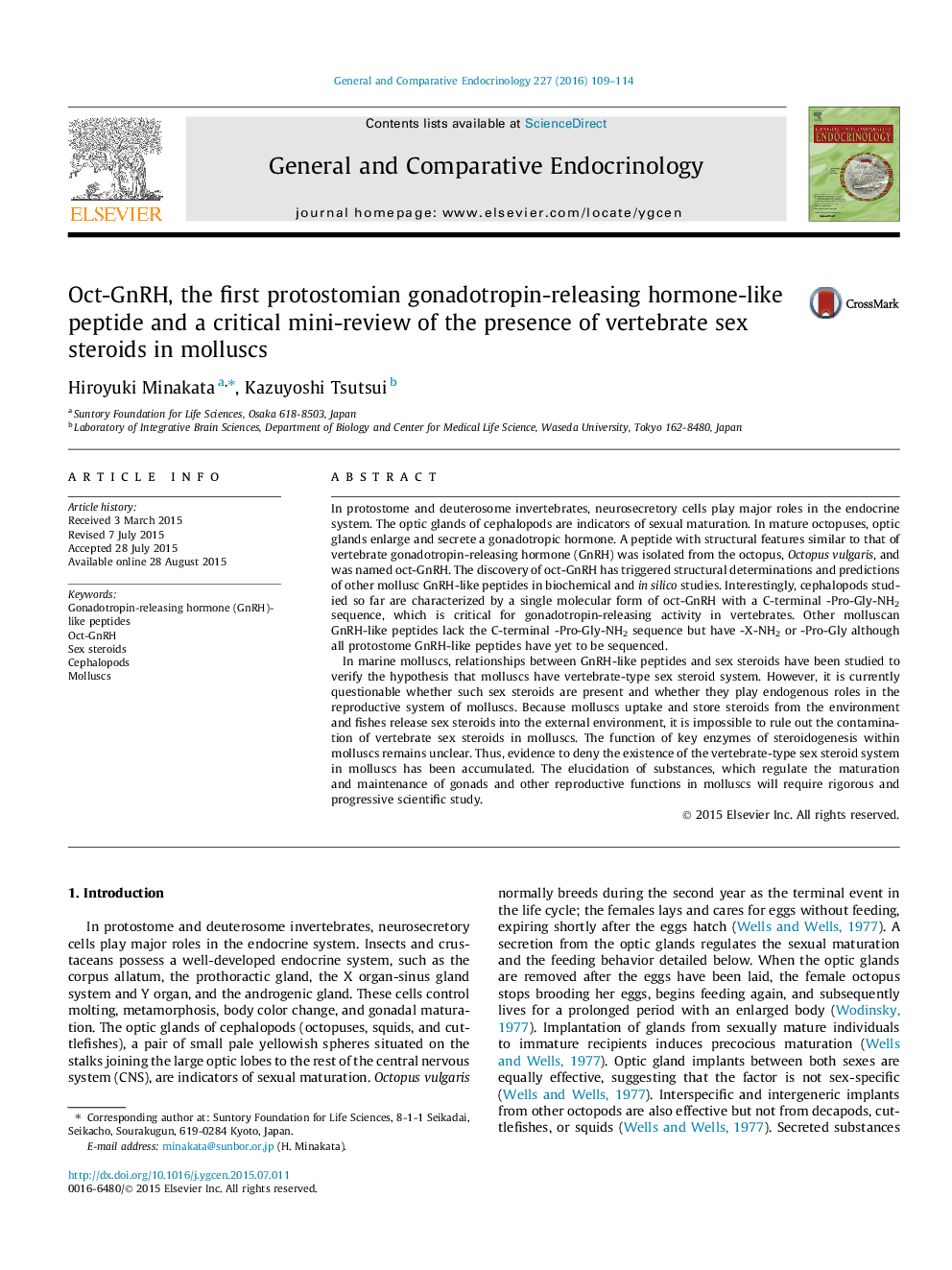| کد مقاله | کد نشریه | سال انتشار | مقاله انگلیسی | نسخه تمام متن |
|---|---|---|---|---|
| 2799864 | 1568879 | 2016 | 6 صفحه PDF | دانلود رایگان |
• Oct-GnRH isolated from octopus brain is the first protostomian GnRH-like peptide.
• Oct-GnRH acts as a multifunctional neuropeptide.
• The presence of vertebrate type sex steroids in molluscs is currently questionable.
In protostome and deuterosome invertebrates, neurosecretory cells play major roles in the endocrine system. The optic glands of cephalopods are indicators of sexual maturation. In mature octopuses, optic glands enlarge and secrete a gonadotropic hormone. A peptide with structural features similar to that of vertebrate gonadotropin-releasing hormone (GnRH) was isolated from the octopus, Octopus vulgaris, and was named oct-GnRH. The discovery of oct-GnRH has triggered structural determinations and predictions of other mollusc GnRH-like peptides in biochemical and in silico studies. Interestingly, cephalopods studied so far are characterized by a single molecular form of oct-GnRH with a C-terminal -Pro-Gly-NH2 sequence, which is critical for gonadotropin-releasing activity in vertebrates. Other molluscan GnRH-like peptides lack the C-terminal -Pro-Gly-NH2 sequence but have -X-NH2 or -Pro-Gly although all protostome GnRH-like peptides have yet to be sequenced.In marine molluscs, relationships between GnRH-like peptides and sex steroids have been studied to verify the hypothesis that molluscs have vertebrate-type sex steroid system. However, it is currently questionable whether such sex steroids are present and whether they play endogenous roles in the reproductive system of molluscs. Because molluscs uptake and store steroids from the environment and fishes release sex steroids into the external environment, it is impossible to rule out the contamination of vertebrate sex steroids in molluscs. The function of key enzymes of steroidogenesis within molluscs remains unclear. Thus, evidence to deny the existence of the vertebrate-type sex steroid system in molluscs has been accumulated. The elucidation of substances, which regulate the maturation and maintenance of gonads and other reproductive functions in molluscs will require rigorous and progressive scientific study.
Journal: General and Comparative Endocrinology - Volume 227, 1 February 2016, Pages 109–114
